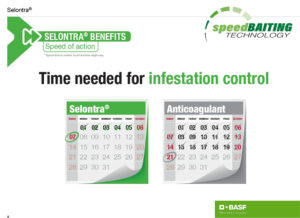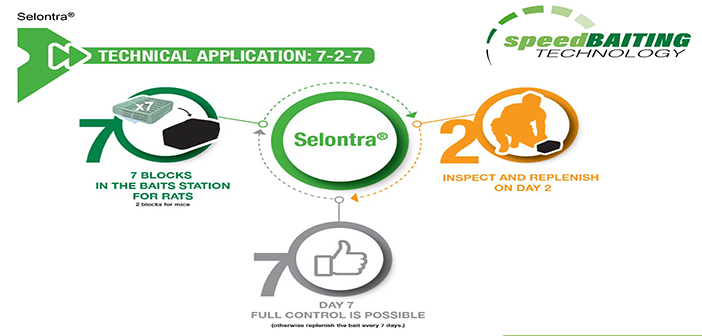All pest professionals have seen first-hand the damage that rats and mice can cause for clients, from contaminating food supplies and damaging buildings to destroying a reputation with just one rodent sighting.
And as rats spread more than 200 human pathogens and carry 45 diseases through their droppings, feet, hair, urine, saliva and blood, it is important that professional pest controllers have all of the tools they need to quickly and effectively control infestations.
Helen Hall, pest control specialist at BASF Pest Control Solutions, said: “Of course, the best way to prevent an infestation in the first place is to ensure you have an integrated pest management programme in place with all regular clients to reduce the likelihood of rodents moving in.
“This includes all of the simple steps that pest controllers know, such as keeping all areas around buildings clear of rubbish, weeds and objects that rats can use as harbourage, proofing buildings and ensuring any openings are covered with mesh smaller than 10 mm, and using non-chemical control methods such as trapping.
“But if you have exhausted all of these options, it may be time to try a chemical control method.”
Traditionally, most chemical pest control methods call for a tamper resistant bait box, but increasingly many pest controllers are reporting that both rats and mice simply won’t enter these bait boxes, let alone eat the bait inside.
So, what do you do if you are faced with an infestation that is avoiding bait boxes?
Mrs Hall said: “We are hearing of increasing reports from pest controllers across the country that neophobia is becoming more of a challenge than ever, with many facing difficulty getting rodents into traditional bait boxes to take the bait in the first place.
If you’re experiencing a particularly challenging job like this, Mrs Hall recommends trying a covered and protected approach to baiting instead:
- First, select strategic sites where rats are known to forage along rat runs, but ensure that these locations aren’t easily accessible to other wildlife or the general public, to minimise exposure to non-target species;
- Next, secure seven blocks of Selontra with a sturdy material, such as garden wire, and attach this onto or inside an object like a pipe or tray to “protect” the bait;
- Using natural materials from around the site, such as palettes, timber, tyres, or anything that is heavy and can’t be easily moved, cover the container holding the secured bait; and
- Finally, ensure the bait point is clearly labelled, as per the CRRU guidelines, to alert any other persons on site as to what is underneath the object.
Mrs Hall said: “This is a much more effective method of baiting, as it doesn’t disturb the rodents’ usual activity or behaviours, meaning bait take is much more likely.”

BASF’s award-winning rodenticide, Selontra, uses the active ingredient cholecalciferol and causes death from hypercalcaemia; the accumulation of too much calcium in the blood.
“Of course, it is important to remember that in order to use Selontra, you must have a certificate,” she said. “We recommend completing our short 30-minute course to find out more about its efficacy and application.”
Take BASF’s Selontra Training Programme, by clicking HERE.


